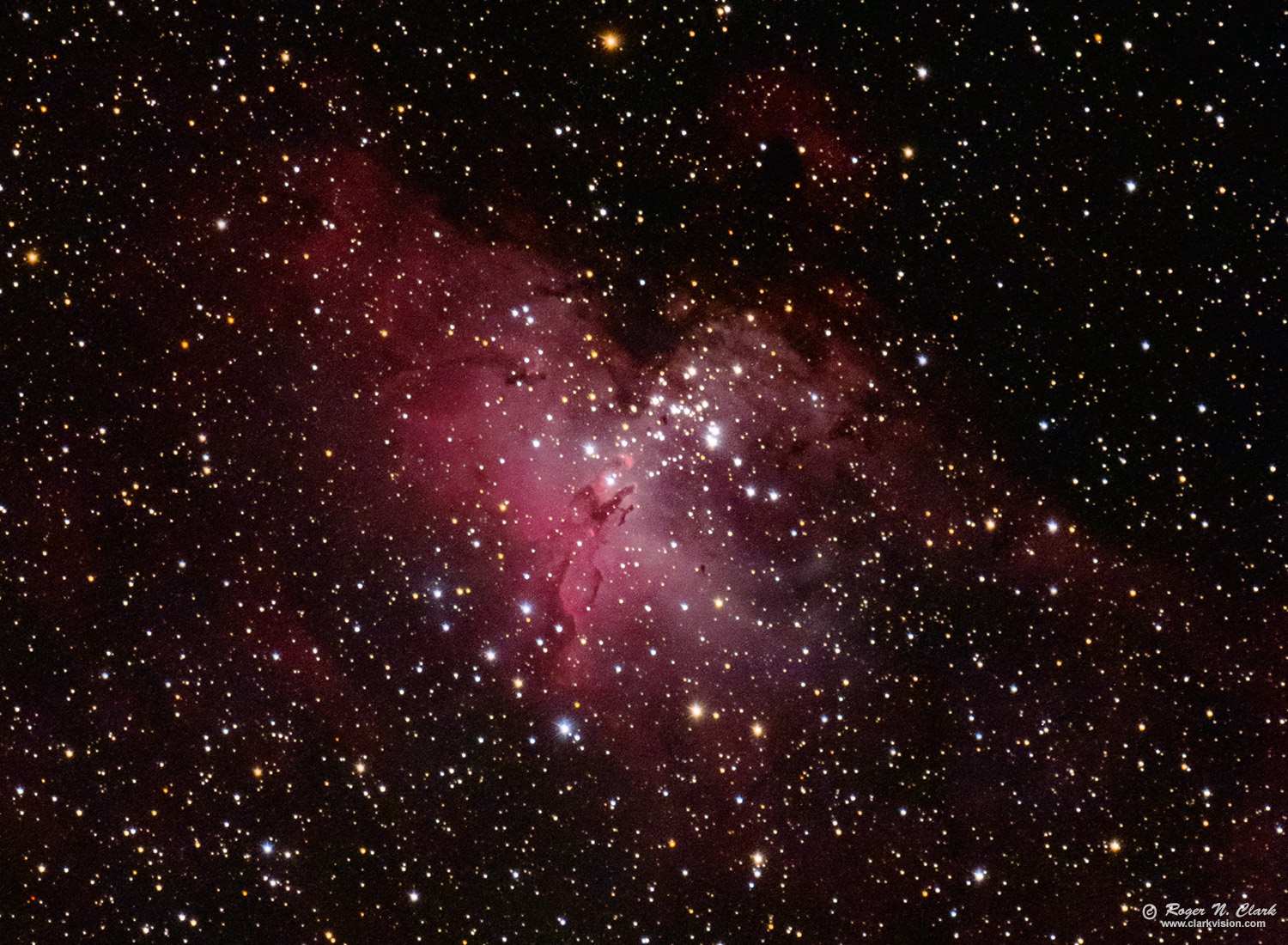| Home | Galleries | Articles | Reviews | Best Gear | New | About | Contact | Gallery Index | Previous |
Next |

| Home | Galleries | Articles | Reviews | Best Gear | New | About | Contact | Gallery Index | Previous |
Next |

The emission nebula M16 is a beautiful nebula in the constellation Serpens, and is a beautiful view in amateur telescopes from dark sites. M16 is a region of active star formation about 7000 light years away. Many of the stars seen in and near M16 are hot young O and B-type stars, while most of the stars seen in the region are old cooler yellow to red stars, stars cooler than our sun. The dark patches in the nebula, the "Pillars of Creation" can be seen in telescopes as small as 8 to 10 inches aperture under very dark skies. Below is a link to a larger version of the image.
Technical. This image was obtained with a stock Canon EOS 90D DSLR Camera and Canon 500 mm f/4 L IS lens (Newer model: Canon EF 500mm f/4L IS II USM Lens). Total exposure time was 15 minutes (ten 90-second exposures) at ISO 1600. This is a natural color image. Post processing: raw conversion with Photoshop ACR (normally I would use rawtherapee, but the color matrix correction in rawtherapee did not do well with the emission), stacking with deep sky stacker, Stretched with rnc-color-stretch, and final adjustments in photoshop. No darks, no flats, no bias frames measured (bias is in the camera EXIF data and a flat field is in the ACR lens profile and corrected during raw conversion). Dark current is suppressed. The exposures were tracked on a Losmandy G11 equatorial mount with an autoguider. Mean RMS tracking accuracy was around 0.5 arc-second.
Original plate scale is 1.32 arc-seconds/pixel and this image is shown at nearly full resolution at 1.98 arc-seconds/pixel.
This is a natural color image.
The Exposure Factors, CEF, CEFA are measures of the relative amounts of light received from a subject. It can be used to fairly compare wildly different lens/telescope apertures and exposure times. For this image on the sky:
Larger image, 2055 x 1839 pixels, 1.98 arc-seconds/pixel, 1.1 megabytes.
Modern digital cameras like the Canon 90D include on sensor dark current suppression technology and low fixed pattern noise at ISOs around 800 and higher, making no need for dark frame subtraction. Modern raw converters correct for light fall-off and also correct for hot/dead/stuck pixels. This makes processing low light images easy: simply align and average.
Also see Astrophotography Image Processing Basic Work Flow.
To learn how to obtain stunning images like this, please visit my Extensive Articles on Photography .
Keywords to this image = astrophoto-1 nebula low-light digital_astro canon_90d Messier rnc-color-stretch
Image ID: m16-eagle-500mm-90d-rnclark-c09.04.2021-IMG_1015-25-av10.e-0.67x-c2s.jpg
| Home | Galleries | Articles | Reviews | Best Gear | Science | New | About | Contact |
Last updated December 20, 2025